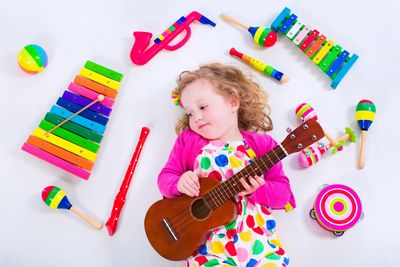Instrument Play
Instrument Play: Playing instruments such as piano, guitar, drums, xylophone, sticks, egg shakers, and others in a structured and organized way can help the child meet fine and gross motor needs. These types of interventions can contribute to improvements in writing, drawing, reaching, grabbing, impulse control, muscle strength, coordination, and more.

Singing
Singing: Singing within music therapy helps to encourage vocalization and support specific communication goals with clients. The music therapist can use melody, rhythm, pitch, and other musical elements to develop or improve expressive language, receptive language, the capability to follow directions, and more.

Musical Improvisation
Musical Improvisation: Facilitating an improvisational musical experience enhances the overall quality of life of the client by providing a space to practice self-expression, creativity, choice making, and have autonomy. This may help in elevating the client’s mood, creating meaningful relationships, and providing a space to improve other goal areas such as socialization, communication, and cognitive goals.

Listening to Music
Listening to Music: By listening to new or preferred songs within therapy, the client can learn to decreasing agitation, improve or develop coping skills, socialization skills, self expression, and more.

Guided Movement to Music
Guided Movement to Music: Using music and rhythm with movements provides the structure and motivation for helping clients develop or improve balance, agility, flexibility, strength, body image, range of motion, imitation skills, self-regulation, following directions,
and more.

Achieve Pediatric Therapy
11602 Lake Underhill Road, Suite 129, Orlando, FL 32825
This website uses cookies.
We use cookies to analyze website traffic and optimize your website experience. By accepting our use of cookies, your data will be aggregated with all other user data.
